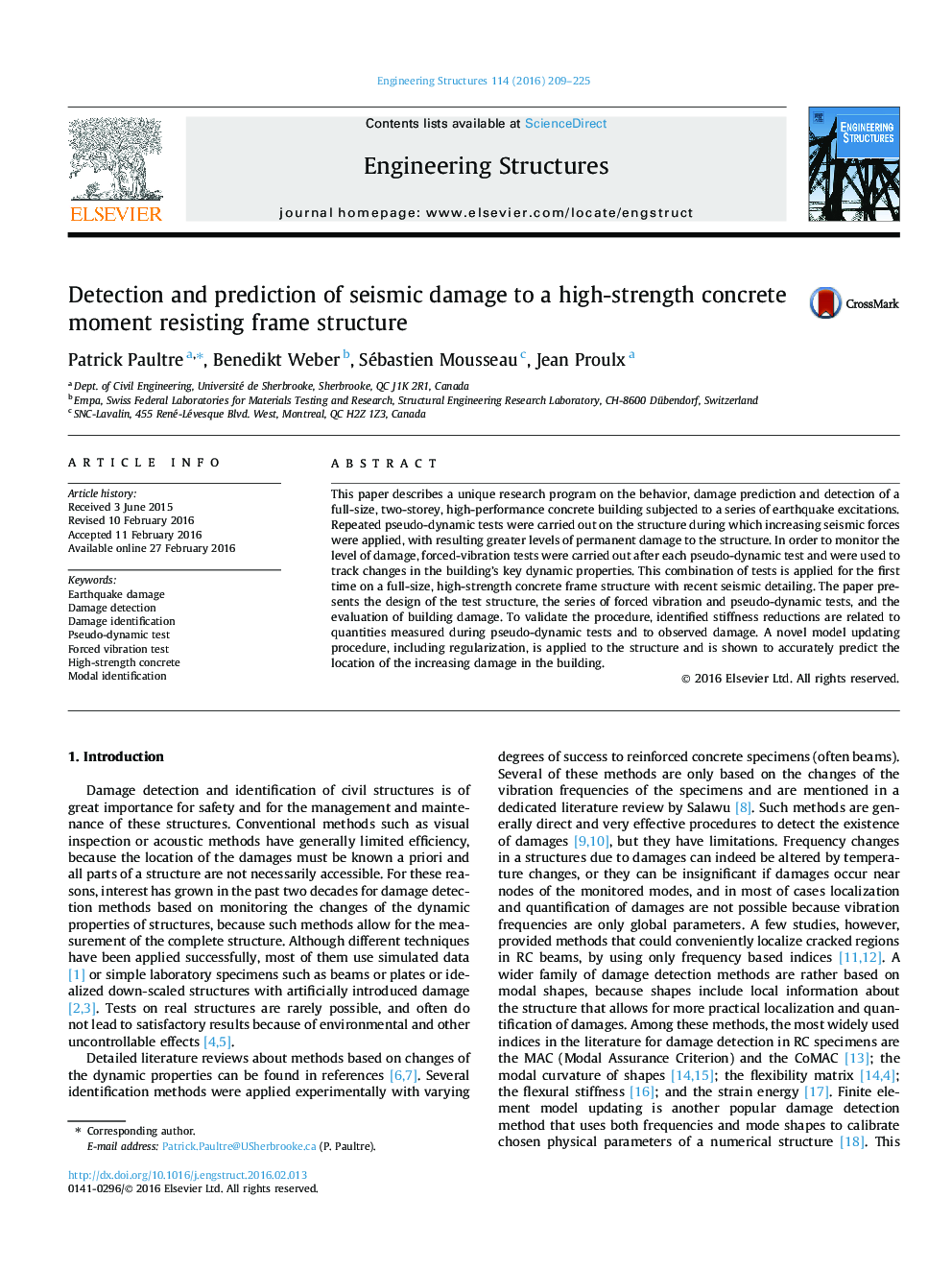| Article ID | Journal | Published Year | Pages | File Type |
|---|---|---|---|---|
| 265822 | Engineering Structures | 2016 | 17 Pages |
•Damage prediction of reinforced concrete frame is presented.•Pseudo-dynamic tests were performed to induce levels of damage to the structure.•Forced-vibration tests were used to track changes in dynamic properties•Identified stiffness reductions are related to damage.•Potential of damage prediction by dynamic identification is clearly demonstrated.
This paper describes a unique research program on the behavior, damage prediction and detection of a full-size, two-storey, high-performance concrete building subjected to a series of earthquake excitations. Repeated pseudo-dynamic tests were carried out on the structure during which increasing seismic forces were applied, with resulting greater levels of permanent damage to the structure. In order to monitor the level of damage, forced-vibration tests were carried out after each pseudo-dynamic test and were used to track changes in the building’s key dynamic properties. This combination of tests is applied for the first time on a full-size, high-strength concrete frame structure with recent seismic detailing. The paper presents the design of the test structure, the series of forced vibration and pseudo-dynamic tests, and the evaluation of building damage. To validate the procedure, identified stiffness reductions are related to quantities measured during pseudo-dynamic tests and to observed damage. A novel model updating procedure, including regularization, is applied to the structure and is shown to accurately predict the location of the increasing damage in the building.
